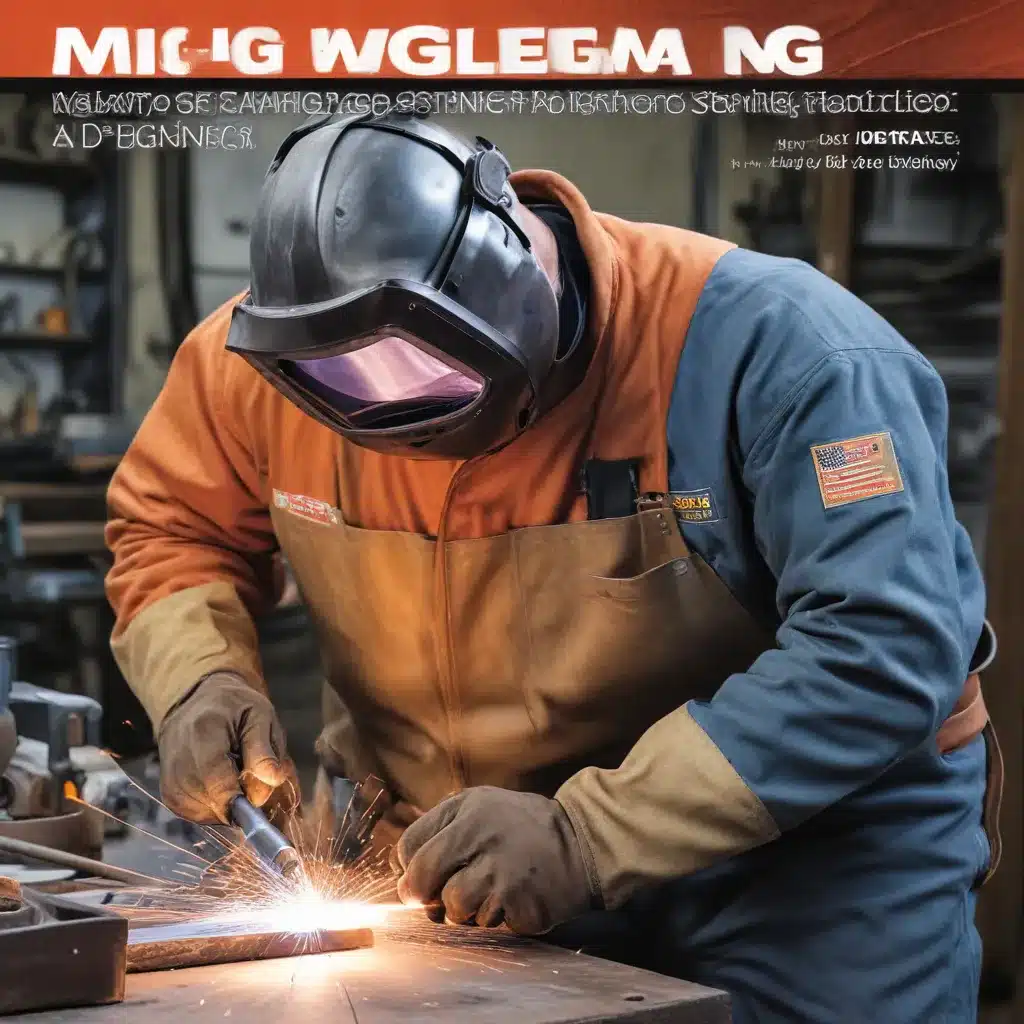
As an experienced welder and metal fabricator, I’ve had the privilege of honing my skills over the years, tackling a wide array of projects and challenges. One welding process that has always held a special place in my heart is MIG welding, or Metal Inert Gas welding. It’s a versatile and efficient technique that has become an integral part of my fabrication arsenal.
Let me take you on a journey through the intricacies of mastering MIG welding. Whether you’re a beginner just starting your welding journey or an experienced fabricator looking to refine your technique, this step-by-step guide will equip you with the knowledge and confidence to elevate your metalworking skills.
Understanding the Fundamentals of MIG Welding
MIG welding, also known as GMAW (Gas Metal Arc Welding), is a semi-automatic welding process that uses a continuously fed wire electrode and a shielding gas to create strong, clean, and durable welds. Unlike stick welding, which requires the welder to manually feed the electrode, MIG welding automates this process, allowing for greater control and efficiency.
One of the primary advantages of MIG welding is its versatility. It can be used to weld a wide range of metals, including mild steel, stainless steel, aluminum, and even some exotic alloys. The ability to adjust parameters like wire feed speed, voltage, and gas flow rate makes MIG welding an adaptable choice for a variety of fabrication projects.
Mastering the MIG Welding Technique
To become a proficient MIG welder, it’s essential to start with the basics and gradually build your skills. Let’s dive into the key steps to mastering the MIG welding technique:
1. Selecting the Right Welding Equipment
The foundation of successful MIG welding begins with choosing the right equipment. This includes the welding machine, wire feed, and shielding gas. Take the time to research and understand the capabilities of different machines and consumables to ensure you select the best setup for your specific needs.
Remember, the quality of your welds is directly influenced by the performance of your equipment. Investing in reliable, high-quality gear can make a significant difference in the consistency and strength of your final results.
2. Properly Preparing the Workpiece
Proper preparation of the workpiece is crucial for achieving optimal weld results. Start by ensuring the surface is free of any contaminants, such as dirt, grease, or rust. Thoroughly clean the area you’ll be welding, using a wire brush or degreasing agent as needed.
Next, secure the workpiece in a stable position, either using clamps or a welding table. This will help you maintain control and consistency throughout the welding process.
3. Adjusting Welding Parameters
One of the key aspects of mastering MIG welding is understanding how to adjust the welding parameters to suit the specific project at hand. This includes setting the right wire feed speed, voltage, and shielding gas flow rate.
Take the time to experiment with different settings on scrap material to find the perfect combination that produces strong, uniform welds. Don’t be afraid to make adjustments as you go, as the optimal settings may vary depending on the thickness of the metal, the joint design, and other factors.
4. Maintaining a Consistent Welding Technique
Developing a consistent welding technique is essential for achieving high-quality, repeatable results. As you MIG weld, focus on maintaining a steady travel speed, keeping the contact tip at the appropriate distance from the workpiece, and smoothly guiding the wire into the molten puddle.
Pay close attention to the arc and puddle formation, adjusting your technique as needed to ensure a seamless, defect-free weld. With practice, you’ll develop a natural rhythm and instinctively know how to adapt your approach to different welding scenarios.
5. Mastering Weld Inspection and Troubleshooting
Becoming a proficient MIG welder involves more than just the physical act of welding. It also requires the ability to inspect your work and identify any potential issues or defects.
Carefully examine each weld, looking for signs of undercut, porosity, or lack of fusion. If you spot any problems, take the time to analyze the root cause and make the necessary adjustments to your technique or equipment. This troubleshooting process will help you continually improve your welding skills and produce consistently excellent results.
The Importance of Practice and Continuous Learning
As with any skill, the key to mastering MIG welding lies in consistent practice and a willingness to continuously learn and adapt. No matter how experienced you may be, there is always room for improvement.
I can’t stress enough the importance of practicing on scrap material before tackling a critical project. The more you weld, the more instinctive the process will become, and the better you’ll be able to anticipate and address any challenges that arise.
Additionally, stay up-to-date with the latest advancements in welding technology, techniques, and industry best practices. Attend workshops, read industry publications, and engage with other welders and fabricators to expand your knowledge and gain new perspectives.
Remember, the true joy of welding lies not just in the finished product, but in the journey of continuous improvement and the satisfaction of honing your craft. Embrace each challenge as an opportunity to learn and grow, and you’ll be well on your way to becoming a true master of MIG welding.
Conclusion
In the ever-evolving world of metal fabrication, the ability to expertly wield a MIG welder is a valuable asset. By following the steps outlined in this guide and committing to consistent practice, you’ll be well on your way to mastering the art of MIG welding.
Whether you’re tackling a complex industrial project or a personal fabrication endeavor, the skills you develop will unlock a world of creative possibilities. Embrace the process, trust your instincts, and never stop learning – and you’ll be producing high-quality, reliable welds that will make you proud.
If you’re ready to take your welding skills to new heights, I encourage you to visit https://theweldfab.com/ to explore the latest welding equipment, fabrication tools, and industry resources. Let’s continue this journey of mastering the craft together!


